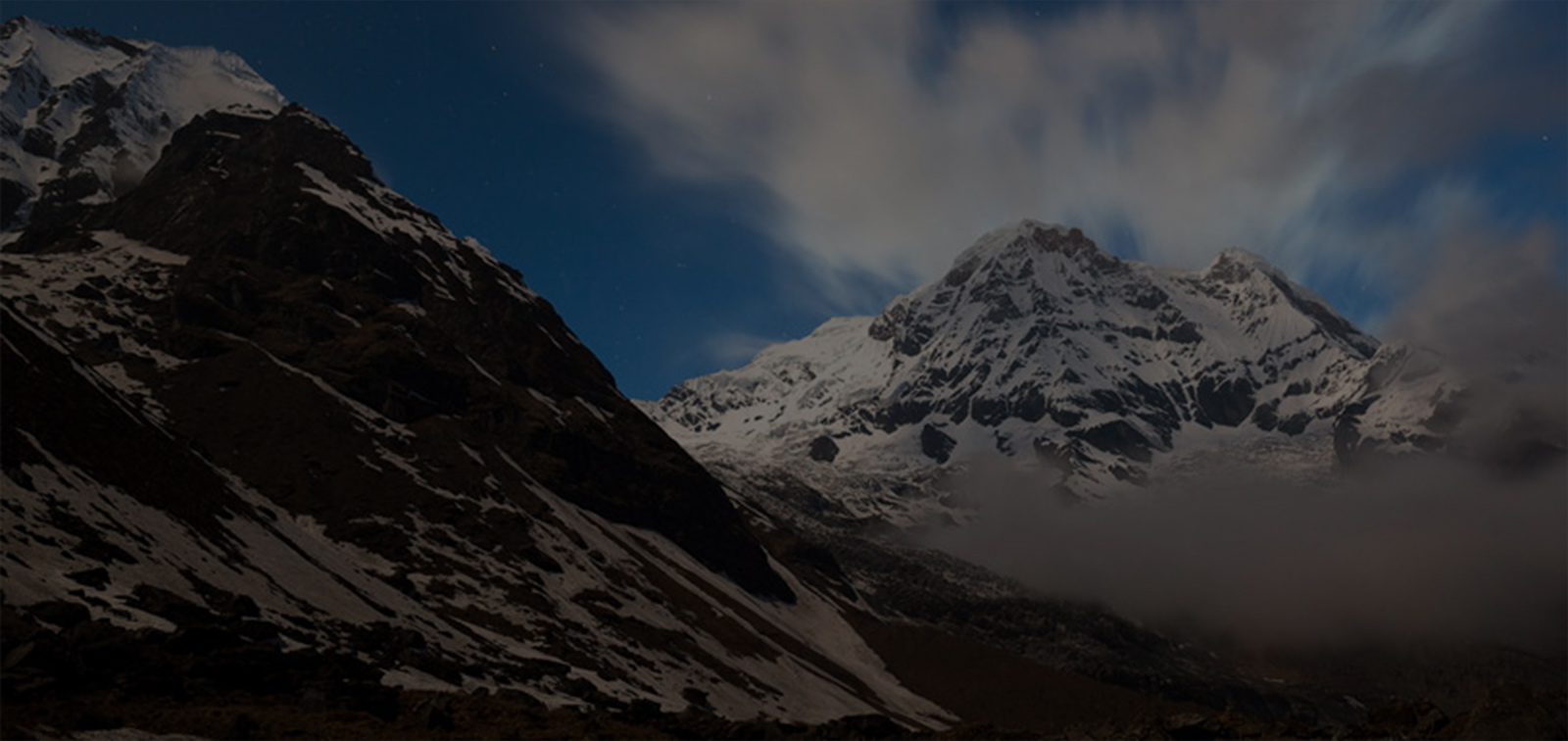Indeed, festivals hold a deeply rooted significance in the fabric of Nepalese society, serving as vibrant celebrations that transcend mere spectacle and resonate with profound cultural, spiritual, and social meaning. In Nepal, every festival is imbued with a purpose, whether it's to invoke blessings for bountiful harvests, honor familial bonds, seek divine intervention in times of calamity, or nourish the soul with spiritual fulfillment.
One of the remarkable aspects of Nepalese festivals is the active participation of the people, who eagerly engage in various rituals, ceremonies, and festivities, rather than passively observing from the sidelines. Whether it's the rhythmic beats of traditional music, the vibrant colors of ceremonial attire, or the aromatic wafts of incense permeating the air, each festival offers a sensory feast that captivates the hearts and minds of participants and spectators alike.
Moreover, festivals serve as invaluable windows into the rich tapestry of Nepalese culture and way of life, offering outsiders a glimpse into the customs, traditions, and beliefs that have endured for generations. Through the observance of festivals, individuals come together to reaffirm their shared heritage, forge bonds of community, and pass down cherished rituals and practices to future generations.
Beyond their cultural significance, festivals in Nepal also play a pivotal role in fostering unity, harmony, and goodwill among diverse communities, transcending barriers of caste, creed, and ethnicity. Whether it's the joyous celebrations of Dashain and Tihar or the solemn observances of Buddha Jayanti and Guru Purnima, festivals serve as occasions for individuals to set aside differences, come together in solidarity, and celebrate the shared humanity that binds them.
In essence, festivals in Nepal are not merely events on the calendar but profound expressions of the country's collective identity, values, and aspirations. They provide a unique opportunity for both Nepalese and visitors alike to deepen their understanding of the country's rich cultural heritage, to revel in the joy of communal celebration, and to partake in the timeless traditions that have shaped the Nepalese way of life for centuries.
Navavarsha (April):
Navavarsha, the Nepalese New Year, heralds the arrival of spring and new beginnings with vibrant celebrations that illuminate the cultural landscape of Nepal. Falling typically in the second week of April, coinciding with the first day of the Nepali month of Baisakh, Navavarsha holds a special place in the hearts of Nepalese people, symbolizing renewal, hope, and prosperity.
As the nation embraces the dawn of a new year, streets come alive with joyous festivities, marked by a kaleidoscope of colors, sounds, and traditions. Families gather to exchange greetings and blessings, sharing sumptuous feasts and sweet treats to usher in the auspicious occasion. From bustling cities to remote villages, the spirit of Navavarsha permeates every corner of the country, fostering a sense of unity and camaraderie among all.
One of the most iconic celebrations of Navavarsha is the Bisket Jatra, held in the ancient city of Bhaktapur. This centuries-old festival is a dazzling spectacle of cultural pageantry, featuring vibrant processions, traditional music and dance, and elaborate rituals that pay homage to deities and ancestors. Streets throng with revelers, as intricately crafted chariots are paraded through the city, accompanied by the rhythmic beats of drums and the resounding cheers of onlookers. The air is filled with the heady scent of incense and the joyous laughter of children, as communities come together to honor their shared heritage and welcome the dawn of a new year.
Beyond the festivities, Navavarsha holds a deeper significance, serving as a time for reflection, gratitude, and spiritual renewal. It offers an opportunity for individuals to cast aside the trials and tribulations of the past year, and to embrace the promise of a brighter future filled with hope and possibility. With each new year, Nepalese people reaffirm their commitment to cherished values of unity, resilience, and compassion, drawing strength from the rich tapestry of their cultural heritage.
In essence, Navavarsha is not merely a date on the calendar but a profound expression of Nepal's collective spirit and identity. It is a time of celebration, connection, and renewal, as communities come together to honor the past, cherish the present, and embrace the limitless possibilities of the future. As the sun rises on Navavarsha, it illuminates the path ahead, guiding Nepalese people towards a future filled with joy, prosperity, and boundless opportunities for growth and fulfillment.
Baisakh Poornima (April):
Baisakh Poornima, also known as Buddha Jayanti, holds a sacred place in the hearts of Nepalese people as they commemorate the birth, enlightenment, and passing of Lord Buddha, the enlightened one who was born in the sacred land of Nepal. This auspicious day, which typically falls in April, is marked by colorful ceremonies, profound spiritual observances, and heartfelt reverence for the teachings and legacy of the Buddha.
Throughout Nepal, devotees and pilgrims flock to sacred sites such as Swayambhunath, Bouddhanath, and Lumbini, the birthplace of Lord Buddha, to pay homage and offer prayers in honor of the enlightened sage. Temples and monasteries are adorned with vibrant decorations, incense fills the air with its aromatic fragrance, and the sound of chanting resonates through the surroundings, creating an atmosphere of peace and tranquility.
At dawn, devotees gather to participate in traditional rituals and ceremonies, offering prayers, lighting butter lamps, and making offerings of flowers and incense to the Buddha. Monks lead processions around the sacred stupas, carrying relics and chanting sacred scriptures, while devotees follow, reciting mantras and expressing their devotion through heartfelt prayers and prostrations.
As the day unfolds, communities come together to engage in acts of compassion and generosity, reflecting the teachings of the Buddha on kindness, compassion, and selflessness. Charitable acts such as offering alms to the needy, distributing food to the hungry, and performing acts of service to the community are common expressions of devotion on this auspicious occasion.
Baisakh Poornima is not only a time of religious observance but also a moment for reflection and introspection, as individuals contemplate the timeless wisdom and teachings of the Buddha. His message of peace, compassion, and enlightenment continues to resonate across generations, inspiring countless souls to embark on the path of spiritual awakening and inner transformation.
In essence, Baisakh Poornima is a sacred journey of remembrance, reverence, and renewal, as Nepalese people come together to honor the profound legacy of Lord Buddha and celebrate the timeless wisdom that illuminates the path to inner peace and enlightenment. It is a day of joyous celebration, heartfelt prayer, and profound spiritual significance, reminding humanity of the enduring power of love, compassion, and wisdom in the quest for true happiness and liberation.
Rato Machchhendranath Rath Jatra (May/June):
The Rato Machchhendranath Rath Jatra stands as one of the most magnificent and revered socio-cultural spectacles in the city of Patan, Nepal. This grand festival, celebrated annually in the months of May or June, is steeped in tradition and spirituality, drawing throngs of devotees and spectators to witness the awe-inspiring procession of the sacred deity Bungdyo or Rato Machchhendranath.
The centerpiece of the festival is the majestic wheeled chariot, meticulously crafted and adorned with vibrant colors and intricate designs. Constructed at Pulchowk, the chariot serves as the divine vessel for the deity as it embarks on its journey through the ancient city of Patan. Pulled by scores of devotees, the chariot traverses through the streets of Patan in several stages, each marked by elaborate rituals, prayers, and offerings.
The atmosphere during the Rath Jatra is electric, as the rhythmic beats of drums, the melodious strains of traditional music, and the fervent chants of devotees fill the air with a palpable sense of reverence and joy. Crowds line the streets, eager to catch a glimpse of the sacred procession and receive blessings from the deity as it passes by.
The climax of the festival culminates in the Bhoto Dekhaune, or the "showing of the vest," a moment of profound significance and spiritual revelation. During this ritual, the sacred vest of Machchhendranath is displayed to the faithful, symbolizing the deity's blessings and divine presence among the devotees. It is a moment of deep reverence and awe, as devotees offer prayers and seek the benevolence of the deity for prosperity, protection, and spiritual fulfillment.
Similar to the Rato Machchhendranath Rath Jatra, the city of Kathmandu also hosts the White Machchhendranath festival in the month of March or April, further exemplifying the rich cultural heritage and religious fervor that permeate throughout the Kathmandu Valley.
In essence, the Rato Machchhendranath Rath Jatra is not merely a festival but a sacred pilgrimage, uniting communities in devotion, celebration, and spiritual renewal. It is a testament to the enduring faith and cultural legacy of the Nepalese people, honoring traditions that have been passed down through generations and reaffirming the profound bond between humanity and the divine.
Dumji (July):
Dumji, a cherished festival among the Sherpa community, represents a time of joy, cultural pride, and spiritual significance celebrated in various Sherpa settlements, particularly in the Kathmandu and Helambu regions of Nepal. Held annually in the month of July, Dumji serves as a vibrant expression of Sherpa identity and tradition, uniting communities in colorful festivities and heartfelt celebrations.
For the Sherpa people, Dumji holds deep cultural and spiritual significance, embodying a sense of belonging, community solidarity, and reverence for their ancestral heritage. The festival provides an opportunity for Sherpas to come together, reconnect with their roots, and honor the traditions passed down through generations.
Central to the celebrations of Dumji are traditional dances, performed with grace and fervor by Sherpa men and women adorned in elaborate costumes and jewelry. These dances serve as a symbolic expression of Sherpa culture, showcasing the rich tapestry of their artistic heritage and the vibrancy of their community spirit.
Throughout Dumji, Sherpa settlements come alive with the sounds of music, laughter, and merrymaking, as families and friends gather to share meals, exchange gifts, and participate in various cultural activities. Ritual ceremonies, prayers, and offerings are also conducted during Dumji, seeking blessings for prosperity, good health, and spiritual harmony.
The festival of Dumji not only celebrates Sherpa culture but also fosters a sense of unity and solidarity among Sherpa communities, reinforcing bonds of kinship and shared identity. It serves as a reminder of the resilience and strength of the Sherpa people, who have preserved their unique cultural heritage amidst changing times and challenges.
In essence, Dumji is more than just a festival—it is a celebration of Sherpa identity, tradition, and resilience. It is a time for Sherpas to come together in joyous fellowship, honoring their ancestors, embracing their cultural heritage, and reaffirming their commitment to preserving the cherished traditions that define their community.
Mani Rimdu (Nov/Dec):
Mani Rimdu, a revered Sherpa festival, stands as a vibrant testament to the rich cultural heritage and spiritual traditions of the Khumbu region in Nepal. Held annually in the months of November or December, Mani Rimdu is a captivating dance drama performed by monks in the sacred monasteries of Tengboche, Chiwong, and Thami Gomba, among others.
At the heart of Mani Rimdu lies the ancient rituals and teachings of Tibetan Buddhism, which are brought to life through elaborate dance performances, ritual ceremonies, and religious observances. The festival serves as a profound expression of devotion, enlightenment, and communal celebration, inviting participants and spectators alike to immerse themselves in the sacred mysteries of Buddhist philosophy and practice.
The performances of Mani Rimdu are marked by intricate choreography, vibrant costumes, and mesmerizing music, creating a captivating spectacle that captivates the senses and transports the audience into a realm of spiritual transcendence. Monks adorned in ornate ceremonial attire perform sacred dances known as cham, each movement imbued with symbolic significance and deep spiritual meaning.
Throughout the festival, the monasteries are adorned with colorful decorations, prayer flags flutter in the breeze, and the air is filled with the melodious chants of Buddhist scriptures. Devotees gather to offer prayers, make offerings, and receive blessings from the lamas, seeking spiritual guidance, protection, and auspiciousness for the year ahead.
Mani Rimdu is not only a time of religious devotion but also a joyous celebration of community, culture, and camaraderie. Families come together to share meals, exchange gifts, and partake in festive feasting, while visitors from near and far are welcomed with warm hospitality and open hearts.
In essence, Mani Rimdu is a sacred journey of spiritual renewal, cultural revival, and communal celebration, uniting Sherpa communities in a shared reverence for the teachings of Tibetan Buddhism and the timeless wisdom of the ages. It is a festival that transcends boundaries of time and space, connecting individuals to the eternal truths of existence and the boundless depths of the human spirit.
Gaijatra (July/Aug):
Gaijatra, affectionately known as the Cow Festival, is a cherished annual celebration in Nepal that brings together communities in a joyful carnival of laughter, music, and cultural revelry. Typically observed over a period of eight days in the months of July or August, Gaijatra is a time-honored tradition that holds special significance for Nepalese people, especially in the Kathmandu Valley.
At the heart of Gaijatra festivities is a spirit of joviality and lightheartedness, as families and friends come together to celebrate life, honor their ancestors, and express their creativity through various forms of entertainment. Dancing, singing, comedy performances, and theatrical displays are among the highlights of the festival, with participants donning colorful costumes and masks to add to the festive ambiance.
The origins of Gaijatra can be traced back to ancient times, when it served as a means of commemorating departed loved ones and providing solace to grieving families. During the festival, families who have experienced the loss of a loved one within the past year lead a procession through the streets, accompanied by musicians, dancers, and performers. Along the way, participants engage in humorous skits and performances, aiming to bring joy and laughter to those who may be mourning.
Central to the Gaijatra procession is the presence of cows, considered sacred in Hindu culture and believed to guide departed souls on their journey to the afterlife. Participants often lead decorated cows through the streets, symbolizing the passage of departed souls to the realm of the ancestors. The sight of colorful processions, elaborately adorned cows, and jubilant crowds creates a festive atmosphere that permeates throughout the Kathmandu Valley.
Beyond its religious and cultural significance, Gaijatra is a celebration of life, resilience, and community solidarity. It serves as a reminder to cherish each moment, find joy in the midst of sorrow, and embrace the bonds of friendship and camaraderie that unite people across generations and backgrounds.
In essence, Gaijatra is more than just a festival—it is a celebration of the human spirit, a testament to the resilience of the Nepalese people, and a vibrant expression of cultural identity and heritage. As participants dance, sing, and laugh their way through the festivities, they honor the past, celebrate the present, and look forward to a future filled with hope, happiness, and shared moments of mirth and laughter.
Krishnastami (July/Aug):
Krishnastami, also known as Krishna Janmashtami, is a joyous and revered Hindu festival that celebrates the birth of Lord Krishna, one of the most beloved and revered deities in Hindu mythology. Observed annually in the months of July or August, Krishnastami holds deep spiritual significance for devotees across Nepal and the world, as they come together to honor the divine incarnation of Lord Krishna.
The festival is marked by elaborate ceremonies and rituals conducted at various Krishna temples, including the iconic Krishna temple in Patan and the ancient temple of Changu Narayan. Devotees gather in large numbers to offer prayers, chant hymns, and participate in devotional activities, seeking blessings for prosperity, happiness, and spiritual fulfillment.
At the Krishna temple in Patan, devotees gather in the early hours of the morning to witness the ceremonial rituals performed by priests, including the abhishekam (ritual bathing) of the deity's idol with milk, honey, and other auspicious substances. Throughout the day, the temple resonates with the melodious sounds of bhajans (devotional songs) and the fragrance of incense, creating a sacred atmosphere of reverence and devotion.
Similarly, at the historic temple of Changu Narayan, located on a hilltop overlooking the Kathmandu Valley, devotees embark on a pilgrimage to pay homage to Lord Krishna and seek his blessings. The temple complex, adorned with intricate carvings and ancient sculptures, serves as a fitting backdrop for the solemn rituals and devotional fervor that characterize Krishnastami celebrations.
In addition to temple ceremonies, devotees also engage in other traditional practices such as fasting, meditation, and the recitation of sacred scriptures, as they reflect on the divine qualities and teachings of Lord Krishna. In the evening, grand processions may be held, featuring colorful floats, elaborate decorations, and joyful singing and dancing in celebration of the birth of the beloved deity.
Krishnastami is not only a time of religious observance but also a celebration of love, compassion, and spiritual enlightenment embodied by Lord Krishna. It serves as a reminder to devotees to cultivate these divine qualities in their own lives and to strive for righteousness and devotion in all their actions.
In essence, Krishnastami is a sacred occasion that brings together devotees in a spirit of devotion, unity, and celebration, as they pay homage to Lord Krishna and seek his blessings for peace, prosperity, and spiritual well-being. It is a time to rejoice in the divine presence of Lord Krishna and to reaffirm one's faith in the eternal truths of Hindu mythology and spirituality.
Teej (Aug/Sep):
Teej, a vibrant and cherished Hindu festival, holds a special place in the hearts of women across Nepal, as they come together to celebrate love, devotion, and the joys of married life. Observed in the months of August or September, Teej is marked by colorful festivities, traditional rituals, and fervent prayers dedicated to Lord Shiva and Goddess Parvati.
At the heart of Teej celebrations are women, who dress in vibrant red saris, adorned with intricate jewelry and henna designs, symbolizing their marital status and devotion to their husbands. The color red holds deep significance in Hindu culture, representing love, passion, and auspiciousness, and is prominently featured throughout the festival.
Throughout the days of Teej, women gather in homes, temples, and public spaces to participate in a myriad of cultural activities, including dancing, singing folk songs, and reciting prayers and hymns dedicated to Lord Shiva and Goddess Parvati. These joyful expressions of devotion serve to strengthen the bonds of sisterhood and camaraderie among women, fostering a sense of unity and solidarity.
A central aspect of Teej is the observance of a fast by married women, who abstain from food and water as a mark of devotion to Lord Shiva and to seek his blessings for the longevity and well-being of their husbands. Unmarried women also participate in the fast, praying for the blessings of a good husband and a happy married life in the future.
Throughout the festival, women flock to Shiva temples, where they offer prayers and perform rituals to seek the divine blessings of Lord Shiva and Goddess Parvati. Married couples pray for a harmonious and prosperous conjugal life, while unmarried women pray for a suitable life partner.
Teej is not only a religious observance but also a celebration of womanhood, love, and the enduring bond between husband and wife. It serves as a reminder of the sacredness of marriage and the importance of devotion, commitment, and mutual respect in marital relationships.
In essence, Teej is a joyous celebration that brings women together in a spirit of devotion, unity, and celebration, as they express their love and devotion to their husbands and seek the blessings of the divine for happiness, prosperity, and fulfillment in their married lives.
Indrajatra (Aug/Sep):
Indrajatra, the festival dedicated to Lord Indra, the god of rain and prosperity, is celebrated with great fervor and enthusiasm in the Kathmandu Valley, Nepal. Lasting for eight days in the months of August or September, Indrajatra is a vibrant celebration that brings together communities to honor ancient traditions, express gratitude for the bounty of nature, and seek blessings for continued prosperity and well-being.
At the heart of Indrajatra festivities is the ceremonial procession of the chariot of Kumari, the Living Goddess of Nepal. Amidst much pomp and splendor, the intricately decorated chariot is paraded through the main streets of Kathmandu, accompanied by traditional music, rhythmic drumbeats, and the joyous cheers of devotees and spectators. The procession serves as a majestic tribute to Kumari, who is revered as the embodiment of divine energy and purity.
One of the defining features of Indrajatra is the presence of masked dancers, known as Lakheys, who captivate audiences with their mesmerizing performances. Adorned in elaborate costumes and fearsome masks, the Lakheys dance with vigor and agility, their movements symbolizing the triumph of good over evil and the renewal of life and vitality.
Throughout the festival, devotees throng to temples and sacred sites dedicated to Lord Indra, offering prayers, making offerings, and seeking blessings for abundant rainfall, agricultural prosperity, and general well-being. Ritual ceremonies are conducted by priests and devotees alike, invoking the blessings of Lord Indra and other deities associated with the festival.
Indrajatra is not only a time of religious observance but also a celebration of community, culture, and tradition. Families come together to share meals, exchange gifts, and participate in various cultural activities, fostering a sense of unity and camaraderie among neighbors and friends.
In essence, Indrajatra is a vibrant celebration that encapsulates the spirit of Nepalese culture and tradition. It is a time to honor the gods, celebrate the bounty of nature, and reaffirm the bonds of community and kinship that unite people across the Kathmandu Valley. As the echoes of drums and dancing feet resound through the streets, Indrajatra serves as a reminder of the rich heritage and enduring legacy of Nepal's cultural heritage.
Dashain / Durga Puja (Sep/Oct):
Indeed, Dashain, also known as Durga Puja, stands as the most significant and eagerly awaited festival in Nepal, capturing the essence of Nepalese culture, tradition, and spirituality. Spanning over 15 days, Dashain is a time of joyous celebration, family reunions, and religious observances that unite people from all walks of life in a spirit of camaraderie and festivity.
As the festival approaches, the entire country is enveloped in an atmosphere of anticipation and excitement, with homes adorned with colorful decorations, streets bustling with activity, and communities coming together to prepare for the festivities ahead. Schools, offices, and businesses close their doors, and families travel across the country to be reunited with loved ones, creating a sense of unity and togetherness that defines the essence of Dashain.
At the heart of Dashain is the worship of Goddess Durga, the divine embodiment of strength, courage, and victory over evil. Devotees flock to temples dedicated to Goddess Durga, offering prayers, making offerings, and seeking her blessings for prosperity, protection, and well-being. Ritual ceremonies, including the sacrifice of animals, are conducted to honor the goddess and invoke her divine grace.
Dashain is also a time for family gatherings and feasting, with lavish meals prepared and shared among relatives and friends. Traditional dishes such as goat meat curry, rice, and sweets are served, symbolizing abundance, generosity, and the blessings of the harvest season.
Throughout the festival, communities come alive with cultural performances, including music, dance, and drama, showcasing the rich heritage and artistic talents of the Nepalese people. Colorful processions, adorned with vibrant costumes and traditional masks, weave through the streets, adding to the festive ambiance and creating lasting memories for all who participate.
Dashain is not only a time of celebration but also a period of reflection and renewal, as individuals contemplate the past year, express gratitude for blessings received, and set intentions for the year ahead. It is a time to strengthen bonds of love and friendship, to forgive past grievances, and to embrace the spirit of compassion and generosity that defines the true essence of the festival.
In essence, Dashain is more than just a festival—it is a celebration of life, love, and the enduring spirit of the Nepalese people. It is a time to honor tradition, to cherish family and community, and to reaffirm the values of unity, resilience, and cultural pride that bind the nation together as one.
Tihar (Oct/Nov):
Tihar, also known as Deepawali or the "Festival of Lights," is one of the most vibrant and cherished festivals in Nepal, celebrated over the course of five days with joyous festivities, colorful decorations, and heartfelt rituals. Observed in the months of October or November, Tihar holds deep cultural and spiritual significance for Nepalese people, symbolizing the triumph of light over darkness, good over evil, and knowledge over ignorance.
At the heart of Tihar are the celebrations of Diwali, during which homes and public spaces are adorned with twinkling lights, oil lamps, and colorful rangoli designs, creating a dazzling spectacle of illumination and beauty. The glowing lights symbolize the victory of positivity and hope, dispelling darkness and ushering in prosperity and auspiciousness for the year ahead.
Throughout the festival, families come together to perform traditional rituals and ceremonies, offering prayers and making offerings to Hindu deities, including Goddess Laxmi, the goddess of wealth and prosperity. Special sweets and delicacies are prepared, symbolizing abundance, sweetness, and the joys of sharing with loved ones.
Each day of Tihar holds its own significance and rituals. The first day, known as Kaag Tihar, is dedicated to the worship of crows, believed to be messengers of the god of death, Yama. The second day, Kukur Tihar, honors dogs, who are revered for their loyalty and companionship. On this day, dogs are adorned with garlands and offered special treats.
The third day of Tihar is Gai Tihar, when cows, considered sacred in Hindu culture, are worshipped and adorned with garlands and tika (vermilion mark). The fourth day, Govardhan Puja or Mha Puja, is dedicated to self-reflection and the worship of oneself, one's body, and one's soul. The final day, Bhai Tika, celebrates the bond between brothers and sisters, who exchange gifts, share meals, and offer prayers for each other's well-being.
In essence, Tihar is a festival that celebrates the beauty of life, the warmth of human connections, and the triumph of light and goodness over darkness and adversity. It is a time to cherish family, to express gratitude for blessings received, and to embrace the values of love, compassion, and unity that define the true spirit of the festival. As homes are illuminated with the glow of lamps and hearts are filled with joy and goodwill, Tihar serves as a beacon of hope and inspiration for all who celebrate its timeless traditions.
Vivah Panchami (Nov/Dec):
Vivah Panchami, a revered festival celebrated in Janakpur, Nepal, holds profound significance as it commemorates the divine marriage of Lord Ram and Goddess Sita, two revered figures in Hindu mythology. Observed in the months of November or December, Vivah Panchami draws pilgrims and devotees from far and wide to Janakpur, located in the eastern Terai region of Nepal.
The festival serves as a sacred reminder of the timeless love story between Lord Ram, the embodiment of righteousness and virtue, and Goddess Sita, the epitome of devotion and purity. According to Hindu mythology, their union symbolizes the perfect marriage, characterized by mutual respect, love, and unwavering commitment to each other.
During Vivah Panchami, Janakpur comes alive with vibrant festivities, religious rituals, and cultural performances that pay homage to the divine couple. The city's streets are adorned with colorful decorations, and temples dedicated to Lord Ram and Goddess Sita are beautifully embellished in preparation for the celebrations.
One of the highlights of Vivah Panchami is the reenactment of the divine wedding ceremony of Lord Ram and Goddess Sita, performed with great pomp and splendor at various temples and sacred sites across Janakpur. Devotees gather to witness the sacred rituals, offer prayers, and seek blessings for marital harmony, prosperity, and happiness.
The festival also offers an opportunity for devotees to reflect on the timeless teachings and values embodied by Lord Ram and Goddess Sita, including devotion, righteousness, and the importance of fulfilling one's duties with integrity and compassion.
Vivah Panchami holds special significance for pilgrims from India, who travel to Janakpur to pay homage to the divine couple and seek their blessings for personal fulfillment and spiritual growth. The festival serves as a powerful expression of cross-cultural unity and shared reverence for the sacred bonds of marriage and devotion.
In essence, Vivah Panchami is more than just a festival—it is a celebration of love, devotion, and the eternal bond between Lord Ram and Goddess Sita. It serves as a reminder of the enduring values and teachings of Hindu mythology, inspiring devotees to emulate the divine qualities of righteousness, love, and selflessness in their own lives.
Lhosar (Feb):
Lhosar, a vibrant and culturally rich festival, is celebrated with great enthusiasm by the Sherpa community, particularly in the month of February. As one of the most significant festivals for the Sherpas, Lhosar marks the beginning of the Tibetan New Year and serves as a time for spiritual renewal, cultural festivities, and joyous gatherings among family and friends.
Throughout Lhosar, Sherpa communities come together to honor their unique cultural heritage and traditions through a variety of rituals, ceremonies, and festivities. Central to the celebrations are folk songs, dances, and cultural performances that showcase the rich tapestry of Sherpa artistry and creativity.
In regions such as Khumbu, Helambu, and other northern areas of Nepal, as well as at Bouddhanath in Kathmandu, Sherpas gather to participate in traditional dances and music that have been passed down through generations. These colorful and dynamic performances serve to connect Sherpas with their cultural roots, while also providing an opportunity for community bonding and shared joy.
Lhosar is also a time for spiritual reflection and religious observances, with Sherpas visiting monasteries and temples to offer prayers, make offerings, and seek blessings for the year ahead. Monks perform sacred rituals and ceremonies, invoking the protection and guidance of Buddhist deities to ensure prosperity, health, and happiness for all.
In addition to its religious and cultural significance, Lhosar holds special importance as a time for family reunions and social gatherings. Families come together to share traditional meals, exchange gifts, and engage in festive activities, strengthening bonds of kinship and fostering a sense of unity and belonging within the community.
Overall, Lhosar is a celebration of Sherpa identity, resilience, and cultural pride. It is a time to honor the past, celebrate the present, and embrace the future with hope and optimism. As Sherpas come together to mark the dawn of the new year, Lhosar serves as a vibrant expression of the enduring spirit and vitality of Sherpa culture and tradition.
Maha Shivaratri (Feb/March):
Maha Shivaratri, also known as the Great Night of Shiva, is a revered Hindu festival celebrated with great fervor and devotion in honor of Lord Shiva. Observed in the months of February or March, Maha Shivaratri holds special significance for devotees across Nepal and India, who gather to pay homage to the divine deity and seek his blessings for spiritual upliftment and liberation.
At the heart of Maha Shivaratri is the worship of Lord Shiva, the supreme god of destruction and transformation in Hindu mythology. Devotees believe that on this auspicious night, Lord Shiva performs the cosmic dance of creation, preservation, and destruction, symbolizing the eternal cycle of life and death.
One of the most sacred places to observe Maha Shivaratri is the Pashupatinath Temple in Kathmandu, Nepal, which attracts thousands of pilgrims and devotees from far and wide. Throughout the night, devotees throng to the temple to offer prayers, perform rituals, and make offerings to Lord Shiva, seeking his divine blessings for spiritual enlightenment and worldly prosperity.
The atmosphere at Pashupatinath Temple during Maha Shivaratri is charged with spiritual energy and devotion, as the sound of sacred chants, prayers, and bhajans fills the air. Devotees light incense, offer flowers, and perform abhishekam (ritual bathing) of the lingam, the symbolic representation of Lord Shiva, with water, milk, honey, and other auspicious substances.
In addition to the religious observances at temples, Maha Shivaratri is also a time for fasting, meditation, and spiritual contemplation among devotees. Many devotees observe strict fasts and spend the night in prayer and meditation, seeking to deepen their connection with Lord Shiva and attain spiritual enlightenment.
Maha Shivaratri is not only a religious festival but also a cultural celebration that brings communities together in a spirit of unity and devotion. It serves as a reminder of the eternal truths of Hindu mythology and the timeless teachings of Lord Shiva, inspiring devotees to lead lives of righteousness, compassion, and spiritual awakening.
In essence, Maha Shivaratri is a sacred occasion that invites devotees to immerse themselves in the divine presence of Lord Shiva, to seek his blessings for inner peace and fulfillment, and to renew their commitment to the path of dharma (righteousness) and moksha (liberation). As devotees gather to celebrate the Great Night of Shiva, they affirm their faith in the eternal power and benevolence of the divine, finding solace and inspiration in the timeless traditions of Hindu spirituality.
Ghodejatra (March/April):
Ghode Jatra, celebrated in the months of March or April, is a vibrant and exhilarating festival that holds a special place in the cultural tapestry of Kathmandu, Nepal. Known as the Festival of Horses, Ghode Jatra is marked by a series of colorful and dynamic events that showcase the rich heritage and traditions of the Nepalese people.
One of the highlights of Ghode Jatra is the thrilling horse race held at Tundikhel, a vast open ground located in the heart of Kathmandu. Riders from across the city compete in an exhilarating display of equestrian skill and prowess, galloping across the racecourse to the cheers of spectators and the sound of traditional music.
In addition to the horse race, Ghode Jatra is also celebrated with various other sports and cultural activities at Tundikhel, including martial arts demonstrations, acrobatic performances, and traditional games. The atmosphere is festive and lively, with families and friends gathering to enjoy the spectacle and participate in the festivities.
Outside of Tundikhel, Ghode Jatra is marked by processions and religious ceremonies held in different parts of Kathmandu. Various deities are carried in ornate palanquins, or khat, adorned with flowers and decorations, and paraded through the streets to the accompaniment of traditional music and chanting.
The procession serves as a symbolic tribute to the gods and goddesses, invoking their blessings for prosperity, protection, and well-being. Devotees offer prayers and make offerings at temples and shrines along the route, seeking divine grace and guidance for the year ahead.
Ghode Jatra is not only a time for celebration and revelry but also a period of spiritual significance and cultural expression. It brings together people from all walks of life, uniting them in a shared appreciation for tradition, community, and the enduring spirit of Kathmandu.
In essence, Ghode Jatra is a celebration of heritage, athleticism, and spirituality, embodying the vibrant diversity and cultural richness of Nepal's capital city. As the sound of hoofbeats and music fills the air, Ghode Jatra serves as a joyous reminder of the resilience, creativity, and collective spirit of the Nepalese people, who come together to honor their past, celebrate their present, and embrace their future with hope and optimism.





















